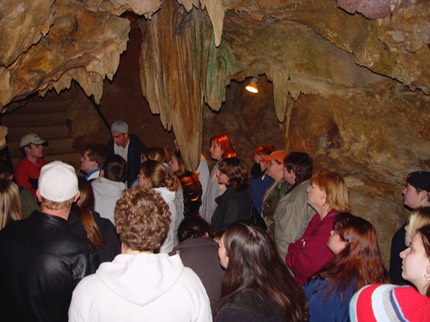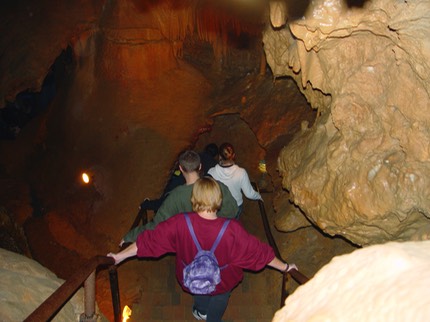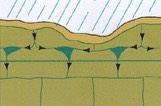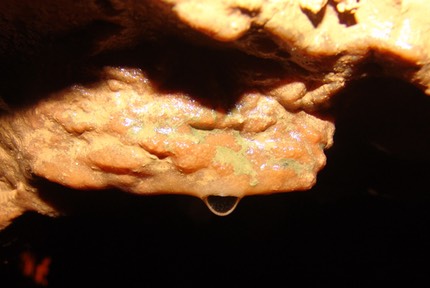This is the view when you first enter the caverns. While the stairs and lights that you see are obviously not natural features everything else is a natural structure formed by groundwater.

An important thing to notice, as well, is that all of those people are standing in a big open space within the cave. That too is natural! There are two components to the karst features within caves; dissolution and precipitation.

The cave itself forms from the dissolution of limestone by water that has become slightly acidic as it infiltrates the fractures.


(Images from the USGS)
As the water pools in these subterranean regions over long periods of time the dissolution can become extensive.

Of course, it would take a VERY LONG time for this amount of dissolution to occur. Each of the different chambers within the cavern would have formed during a different stage in the water table. While the water table is as low as it is in the image above dissolution of the submerged area will continue.
Water will continue to percolate through the limestone. It will still be carrying dissolved carbonate minerals. As each drop becomes exposed to the air within the cavern it will precipitate the minerals.

These minerals will either precipitate before the drop falls, in which case a stalactite may form. If the drop falls and then precipitates the minerals a stalagmite may form. Both of these are types of speleothems, along wtih a number of other types of features.
More about: